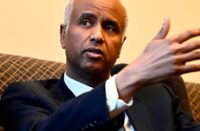The pressing issue of where the colossal sums required to combat climate change will come from, particularly for developing nations, is currently a trillion-dollar question. The recently concluded UN climate conference emphasized the need for increased government funding. However, the weak commitments towards financing have resulted in a surge of criticism, indicating the necessity for alternative solutions.
Catherine McKenna, CEO of Climate and Nature Solutions and former federal environment minister, stated in an interview that government sources are insufficient. She suggested a strategy known as blended finance, which leverages limited public funds to attract private sector investment into projects that address climate change.
McKenna emphasized the need for innovative strategies to incentivize and facilitate such investments, particularly in developing countries where the risks are higher and business cases more challenging. As a result, these countries are currently receiving a minuscule portion of global clean energy spending.
To address this funding gap, FinDev Canada recently launched a blended finance platform in collaboration with Mitsubishi Financial Group. Anchored by a Green Climate Fund investment, the platform aims to raise $1.5 billion to assist up to 25 developing countries.
However, employing blended finance is challenging due to its complexity, the risk perception associated with the projects and countries, and a lack of data sharing regarding previous project performances. Despite these challenges, advocates of the approach, including Convergence, a Toronto-based group promoting blended finance, find it crucial for bridging the funding gap.
Simultaneously, others express concerns about the focus on private markets and argue for more direct public lending to public projects. Critics suggest that making profits from adaptation projects like flood barriers and wildfire prevention is far from straightforward and could be a costly approach to the climate transition.
Regardless of these challenges, many industry leaders insist there isn’t enough government funding to cover all the bases, so private sector involvement is crucial. They encourage continued hard work in finding solutions to ensure the funds are directed effectively, not just at easy targets.





